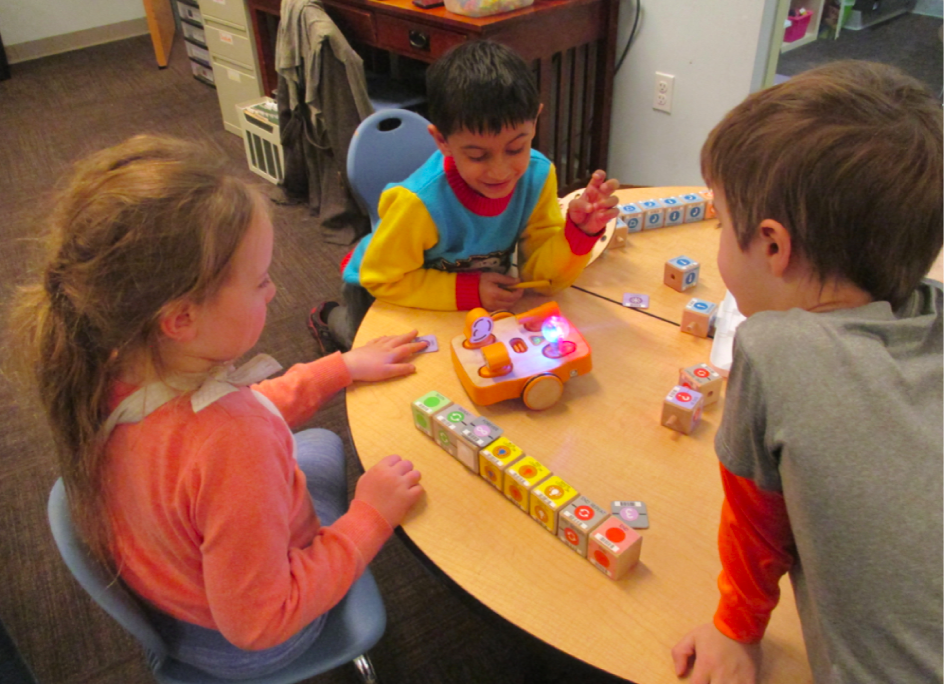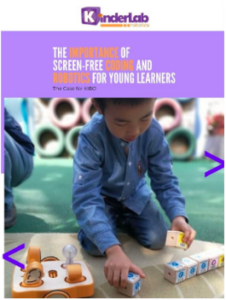Why Teach About AI Technology in Early Childhood?
It seems like questions about Artificial Intelligence (AI) are everywhere in the news − and in education. Educators worry about students using programs like ChatGPT to do their work for them, shortchanging themselves in the process. And some worry that AI technology might change teaching too, by displacing teachers and weakening the human connections that are critical to schooling.

As early childhood educators, we may feel that these questions about AI are a little distant from our experience with our students. The hard foundational work − both educational and social − that our Pre-K, K, and early elementary students do every day is not the kind of thing that can be handed off to AI. Chatbots can’t help students “cheat” on reading a picture book together, or exploring math relationships with pattern blocks, or learning how to share the dramatic play area. So students in early grades won’t be using AI right away. But we do have a responsibility to teach our students about AI technology.
Does AI technology matter in early education? It does.
This may seem daunting − how can our young students understand such advanced technology, and how can we teach about it? The answer is that teaching students about AI technology is a wonderful way to meet our broader goals of teaching about computer science and digital literacy. Most states have adopted standards for computer science education and digital literacy in grades K-12. And policy makers have recognized that it’s important to introduce STEM and coding concepts in early childhood, because research proves that starting children young with STEM has the greatest impact on their success in STEM education and their interest in STEM careers.
For early grades, computer science standards emphasize basic computational thinking skills like breaking problems down into smaller parts, creating a sequence of steps to solve a problem, and understanding how computers sense the world and store information. These standards also emphasize digital literacy concepts such as describing the ways peoples’ use of computers can affect society − positively and negatively.
Artificial intelligence is not magic, but a computer program.
It turns out that AI technology is a perfect framing for all of these topics. Artificial intelligence is not magic; it is simply a kind of computer program. It works the way it does because human engineers − just like our students! − designed it, tested it, fixed it, and improved it. These engineers used the same basic practices of sequencing, modularity, and the engineering design process that we find in many K-5 CS standards. We can explore how these systems work with our students, and we can engage them in discussions about how AI tools might impact their lives, their schools, and their society.
Early STEM education, where children learn at a young age about technology, computers, coding, and AI, is the key to giving children understanding and mastery of AI tools. We want students to understand these tools, understand how they work, and think critically about how they can be used. That’s the best long term response to the challenge these tools pose in education, and it requires early education about AI technology.
What do you think about the relevance of AI education in PK and early grades? Have you started to teach about AI? We’d love to hear your stories and opinions. Let us know on social at @KinderLabRobot, or just email me directly at jason@kinderlabrobotics.com!
-Jason Innes
Director of Curriculum, Training, and Product Management
Meet KIBO, the Screen-free Educational STEAM Robot
KIBO, the learning robot designed specifically for elementary-aged kids, offers an inviting, engaging platform for young children to start their journey into creating with code in a fun and creative way. KIBO’s block-based coding language gives children control over the robot’s movements, sounds, and sensors, allowing them to express their imaginations with code. The KIBO curriculum for educators also teaches children to tell stories, create characters, and explore the world around them through code. KIBO is the number one choice in screen-free coding for kids – trusted by more parents and schools to introduce today’s youth to the wonders of technology and robotics.



















